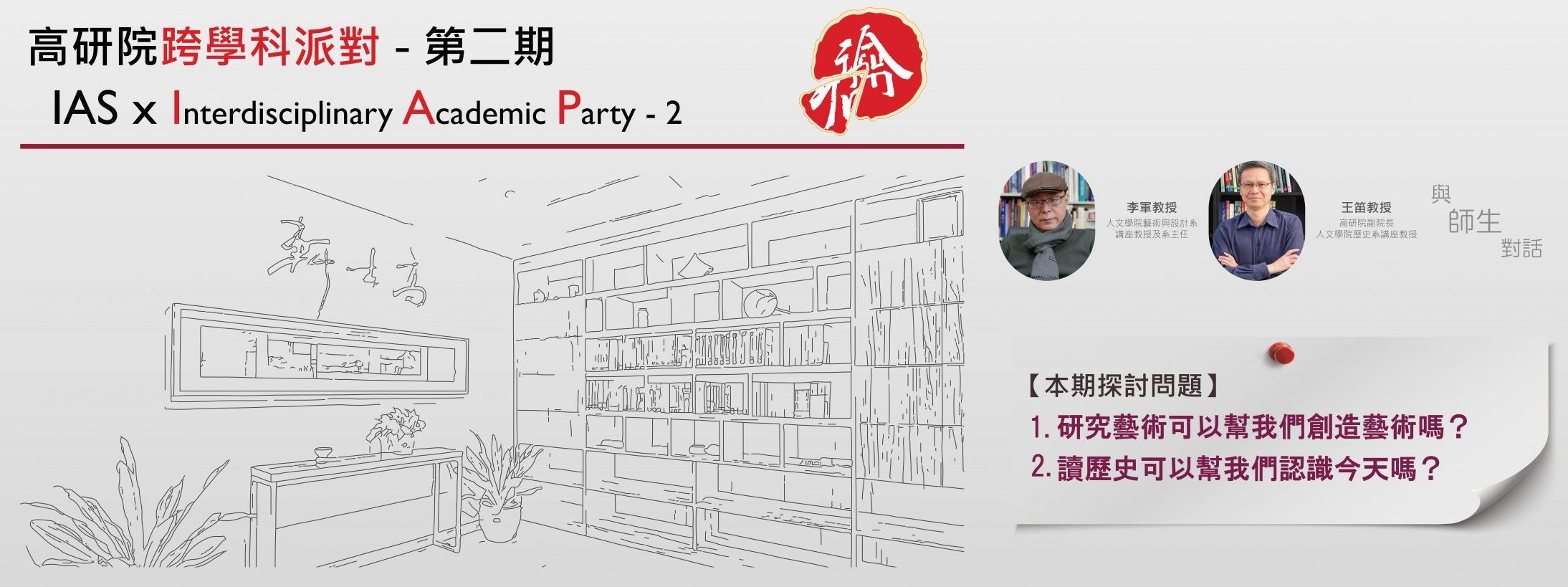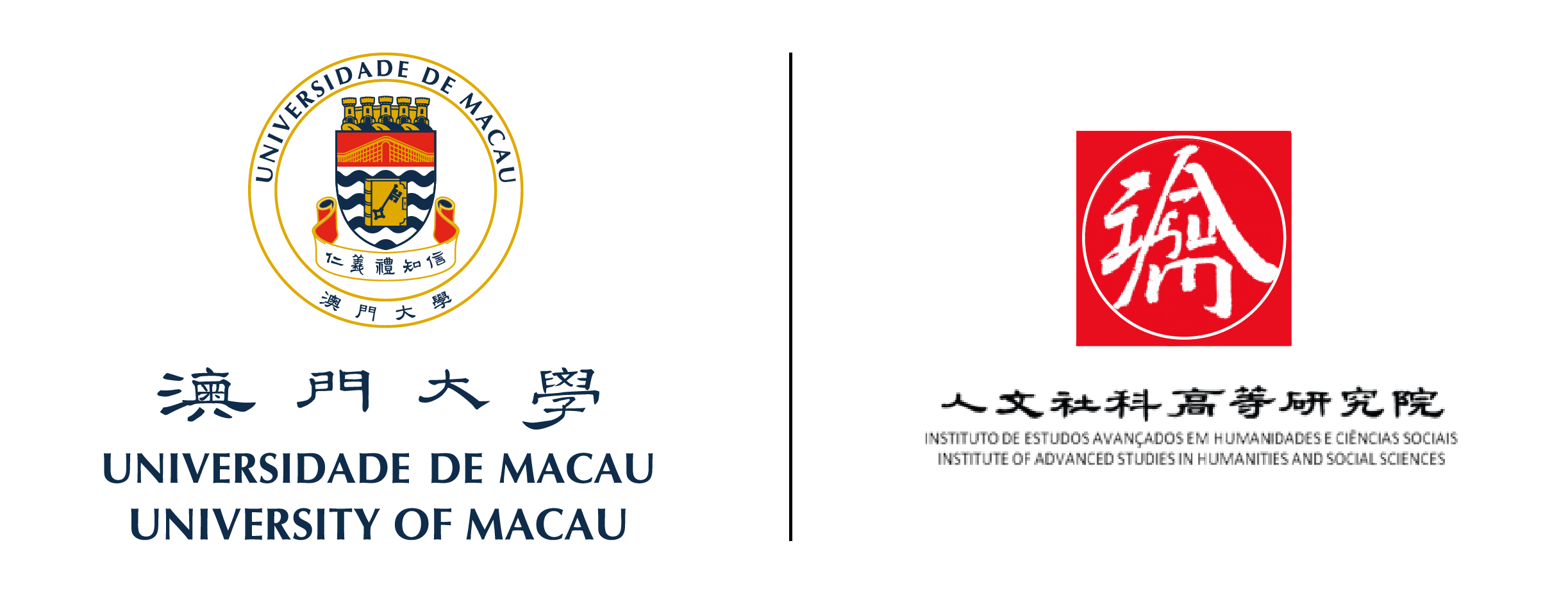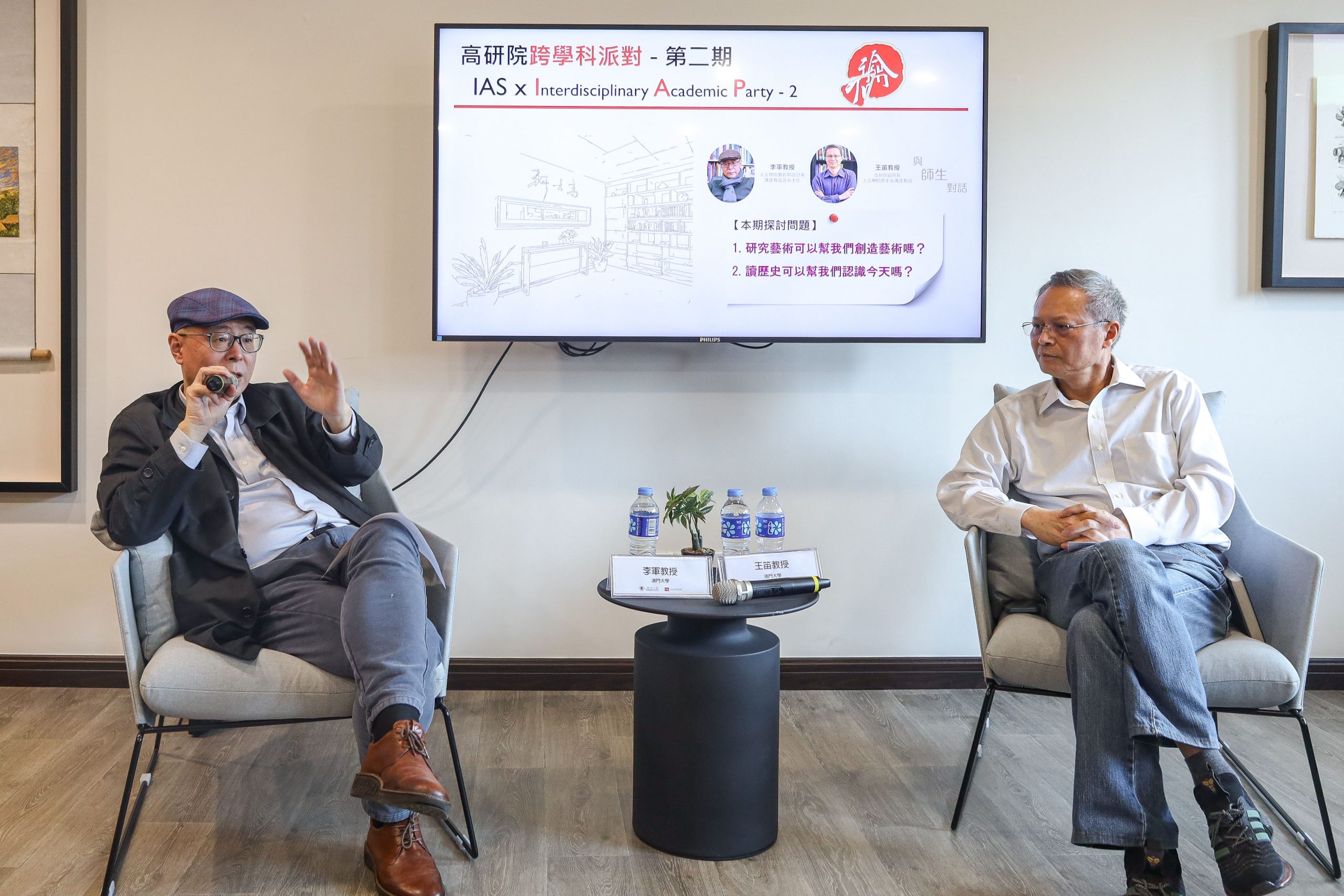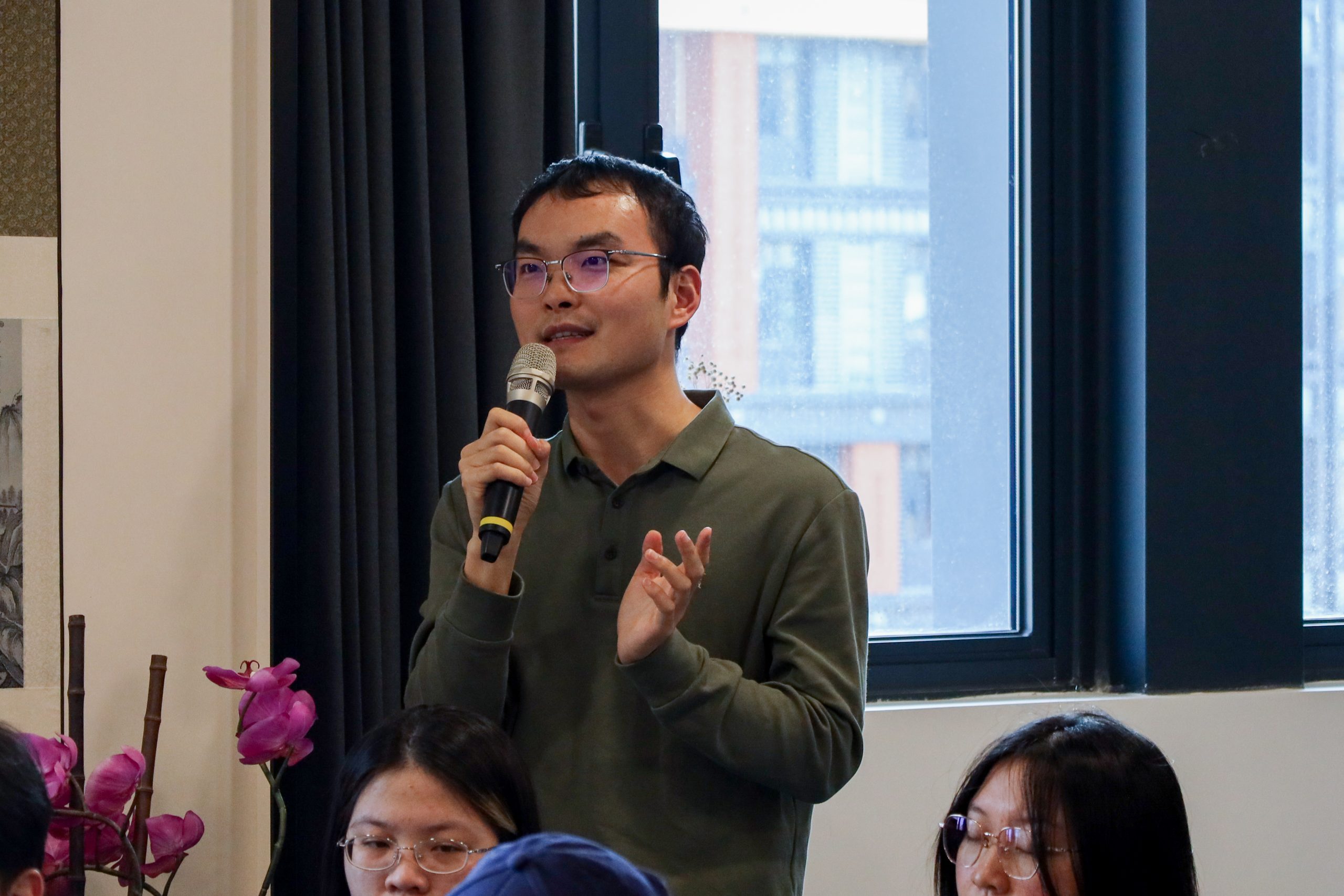
The second IAS x Interdisciplinary Academic Party organized by IAS was successfully held on 21 March at the Common Room, Cultural Building. The theme of the party was “The Art and Humanities”. Prof. Jun Li, Chair Professor and Head of the Department of Arts and Design of FAH, and Prof. Wang Di, Associate Director of IAS and Chair Professor of the Department of History of FAH, were invited as speakers.
Prof. Wang highlighted the role of artistic imagination in micro-history within historiography. By combining art and historical techniques, historians can craft captivating narratives. Art and history share commonalities: both provide insights from a broader perspective and analyze details gradually, similar to how artists paint. Additionally, they exhibit a hierarchical structure. Viewing a city from afar lacks clarity, but approaching it reveals intricate features like city walls and neighborhoods. This method of studying a city involves observing it from various distances: far, medium, and close-up.
Afterwards, Prof. Li expressed his thoughts through the lens of history. In compiling a cross-cultural art history chronicle, one encounters textual images that remain as the last remnants of a lost scene from the past. The goal is not to share experiences with those who have been in the past but to bring them selectively to the present. Just like a live broadcast of a soccer match, the audience can witness dodging and shooting, but these actions are not always authentic, as they have been edited, selected, and merged. These are what we call the building blocks of history, as well as the components of art.
The two professors subsequently engaged in a conversation regarding the interplay between comics, humanities, and art. Comics, being socially critical in nature, often spearhead movements for ideological liberation. However, they are also the first to be suppressed during periods of political tension. Prof. Wang advocates for the importance of individuals expressing their opinions and suggestions with courage. Conversely, Prof. Li emphasizes the observation of natural patterns in history and encourages students to maintain composure and stability during challenging times.
At the end of the party, a student asked a philosophical question about professors’ ultimate goals in life. Prof. Wang laughed heartily and said, “If I must answer this philosophical question: where to go? My answer will be to the grave.”
The event attracted nearly 100 students and faculty members to participate. It is obvious that the interdisciplinary atmosphere during the party was strong, and all these could never have happened without the two professors for their brilliant efforts to bring us a wonderful academic feast. The aim of the IAS interdisciplinary academic party is to enhance the interdisciplinary research activities of the faculties and students on campus as well as to strengthen the ties between students and scholars, and to stimulate innovative thinking and academic exploration.





